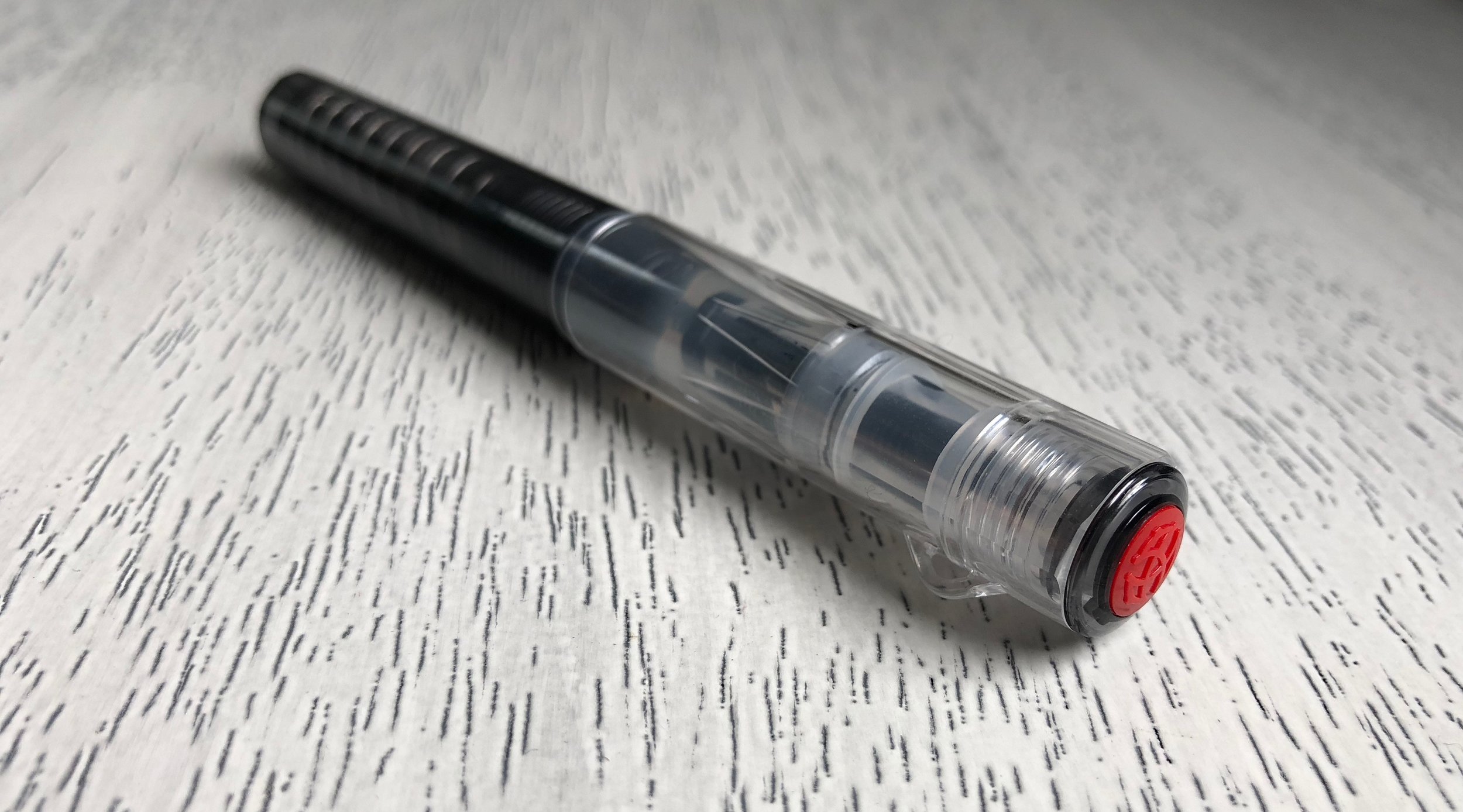TWSBI is known for producing some of the best bang-for-your-buck pens on the market. The TWSBI 580AL fountain pen was my first “fancy” pen purchase (read-greater than $20), and it’s still the best value pen in my collection. TWSBI recently introduced the TWSBI GO fountain pen at its least expensive price point yet. How does it compare to its more expensive counterparts? Read on to find out.
The TWSBI GO fountain pen offers many of the same benefits of other TWSBI pens, without the frills of its more expensive brothers and sisters. Most metal parts have been replaced with plastic, aside from the nib itself, piston spring, and ink chamber seal. The pen is still sturdy and well-built, and the heavy plastic helps it maintain a nice heft in hand. Most TWSBI pens have a twist-operated piston, but this has been replaced by a sturdy metal spring-loaded piston in the GO. It’s less finicky than a twist piston and won’t need to be greased every now and then, but it does give the pen a cheaper appearance.
To fill the pen, dip it into your favorite bottle of ink and press the piston. The TWSBI GO is a bit thicker, so I did have some trouble getting it past the halfway mark in my smaller Diamine bottles. It turns out TWSBI has developed its own solution for this issue, but unfortunately, the GO doesn’t work with TWSBI’s easy fill mechanism in the top of its inkwells. You're just going to have to fill this pen the old-fashion way.
TWSBI pens-or any piston fillers for that matter-aren’t designed to use ink cartridges. This might scare away fountain pen novices, but the huge ink capacity is worth the tradeoff, in my opinion. If you’re considering purchasing this pen as your first fountain pen, check out my Penventory page for ink recommendations. Diamine inks are a great place to start, since they perform well and are affordable.
Although the TWSBI GO does compromise in certain areas, the nib writes just as well as any TWSBI nib I’ve ever used. I usually rely on F (fine) nibs but purchased an EF (extra fine) nib and have been very pleased with its performance. TWSBI nibs tend to run broad, like most European nibs, and are wet writers in most instances. I have to admit, I think I may prefer the EF nib to the F.
TWSBI 580AL (top) and TWSBI GO (bottom)
This brings me to my only true issue with the pen—its grip design. Most TWSBI grips are smooth, and slipperiness is something that comes with the territory. The TWSBI GO grip is tapered and smooth, except for a molded grip at the base of the nib. I typically don’t grip the pen this low, since its uncomfortable and tends to result in inky fingers, but the GO grip somewhat forces you into this position. I wish the grip design was either fully molded, like the Lamy Vista and Safari, or completely smooth, like the TWSBI 580AL.
TWSBI 580AL (left) and TWSBI GO (right)
Instead of a clip, the TWSBI GO fountain pen comes with a keychain loop. If you absolutely must have a clip but want a TWSBI, try the TWSBI Eco. Personally, I like clip-less designs since I carry most pens in a Nock Co. Sinclair Pen Case. The pen also caps and posts securely and the cap relies on a snap mechanism, instead of a twist mechanism, so no need to worry about pocket leaks.
Overall, the TWSBI GO fountain pen is a competent addition to the $20 and under category. Those looking for an affordable piston filler will be hard pressed to find a pen that offers such a high quality writing experience for such a low price.






